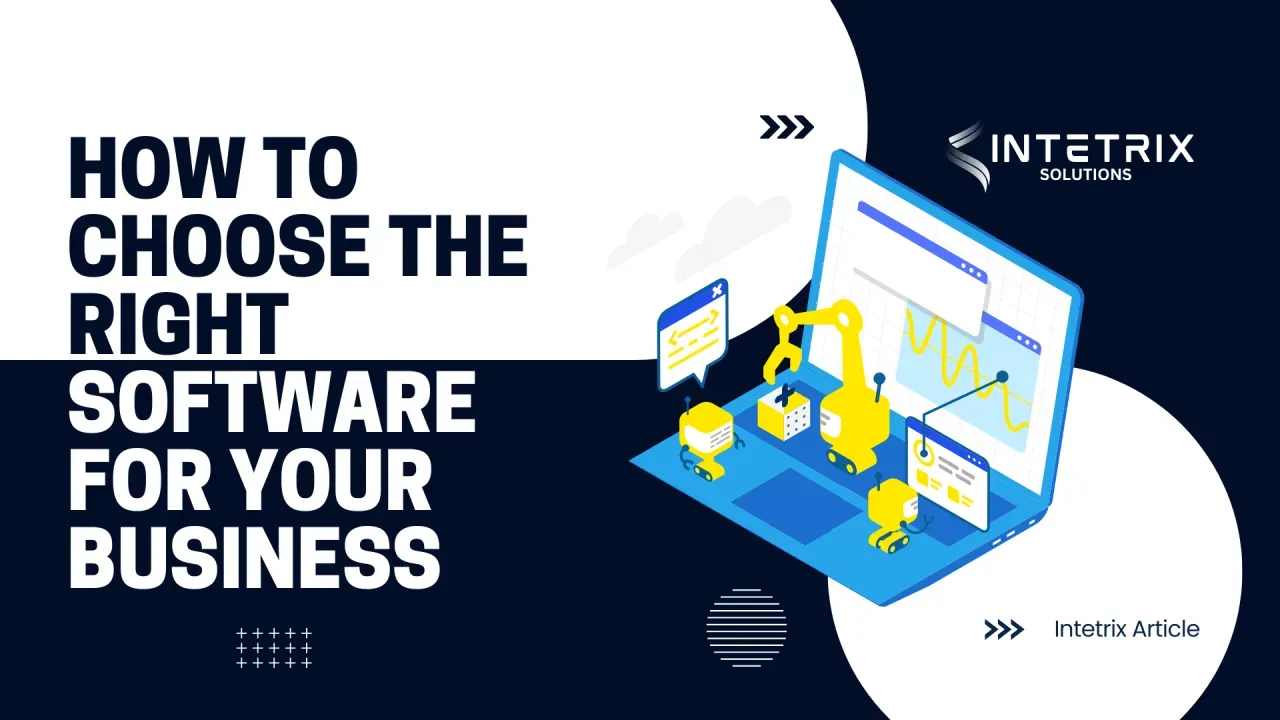Choosing the Right Software for Your Business is a strategic decision that sets the tone for how teams collaborate, how data is captured and analyzed, and how quickly you can translate ideas into measurable outcomes. A disciplined software selection process helps you map objectives to capabilities, weigh trade-offs between features and usability, and create a clear, testable path from discovery to deployment. When you perform an ERP vs CRM comparison, you can see how enterprise planning and customer relationships intersect, revealing which platform delivers the most holistic value and where integration will unlock seamless cross-department workflows. A rigorous vendor evaluation, supported by references, security checks, and credible roadmaps, helps you select partners who align with your timelines and deliver predictable implementation outcomes, while anchoring decisions to ROI and total cost of ownership. Keep scalability and integration in mind from day one, ensuring your choice can grow with your needs, connect with existing data ecosystems, and adapt to changing business models without costly rework.
Viewed through a broader lens, the process of selecting software becomes technology procurement and solution-fit evaluation that aligns with your strategic objectives, governance standards, and day-to-day workflows. By scanning the IT landscape, teams map the software stack, assess data interoperability, and consider vendor partnerships and roadmaps to ensure integration readiness. The result is a flexible, future-proof toolset that supports automation, governance, and continuous optimization while reducing risk and accelerating value realization.
Choosing the Right Software for Your Business: A Practical Software Selection Process
Choosing the Right Software for Your Business is more than selecting a tool; it’s about aligning technology with your strategic goals, culture, and daily workflows. A rigorous software selection process starts by translating ambitions into measurable requirements, mapping current processes, and identifying gaps that the new system must fill. By documenting these needs in a structured way, you create a durable backbone for the software selection process that guides all stakeholders toward a shared definition of success.
Bring in cross-functional representation early and use a formal RFI/RFP cycle to gauge vendor capabilities, data models, and integration readiness. Build a transparent scoring rubric that weighs functionality, usability, security, scalability, integration readiness, and ROI and total cost of ownership. In parallel, consider vendor evaluation and a phased validation plan, including demos and sandbox testing, so you can validate how the solution behaves in real workflows and how quickly users will adopt it.
ERP vs CRM Comparison, Vendor Evaluation, and ROI in a Scalable Integration Strategy
ERP vs CRM comparison is a common crossroads in modern software selection. The right path depends on your primary value streams: if you need end-to-end operational control across manufacturing, procurement, and finance, an ERP approach offers integrated data flows; if your focus is on sales, pipeline management, and service interactions, CRM plays a central role. In practice, many organizations require cross-category integration; map ideal data flows between departments and evaluate whether the vendor supports clean integrations and scalable data models that align with your growth plans. This is the essence of a thoughtful ERP vs CRM comparison that informs vendor evaluation.
During vendor evaluation, look beyond brochures to live demos, reference checks, and pilot programs. Evaluate scalability and integration capabilities, data security, and the vendor’s roadmap for ongoing enhancements. Tie the evaluation to ROI and total cost of ownership by modeling licensing or subscription, implementation, data migration, training, and future upgrades. A disciplined approach helps ensure you pick a solution whose architecture supports expansion, multi-site deployments, and seamless integration with existing systems while delivering a favorable ROI over time.
Frequently Asked Questions
Choosing the Right Software for Your Business: How does the software selection process influence an ERP vs CRM comparison and vendor evaluation?
The software selection process should begin with clear goals and requirements, then use ERP vs CRM comparison to identify which category best supports your priorities (operations versus customer interactions). Map data flows across departments and confirm cross‑category integration needs. Conduct vendor evaluation with RFIs/RFPs and focused product demos, asking for references and real‑world use cases. Use a structured scoring rubric that weighs functionality, usability, security, integration readiness, and total cost of ownership so you can rank options objectively.
Choosing the Right Software for Your Business: How should ROI and total cost of ownership, scalability and integration considerations shape vendor evaluation and negotiation?
Model ROI and total cost of ownership across multiple years, accounting for initial licensing or subscription, implementation, data migration, training, and ongoing maintenance. Assess scalability and integration by verifying multi-site support, data growth, and robust APIs or connectors to your existing systems. Use these findings in vendor evaluation to compare roadmaps and references, and negotiate terms that protect you on scaling, data ownership, and service levels.
| Key Point | Summary |
|---|---|
| Introduction | Choosing software should align technology with strategic goals, culture, and daily workflows to streamline operations and enable data-driven decision making; a rushed or ill-informed choice creates friction and poor user adoption. |
| 1) Define goals and requirements | Outline concrete objectives, translate them into measurable requirements, map current processes, and distinguish must-have from nice-to-have features to prevent scope creep. |
| 2) Understand software categories and fit | Identify domains (ERP, CRM, HRIS), consider cross-category integration, and sketch ideal data flows to ensure the selected systems can share data cleanly. |
| 3) Build a robust software selection process | Use formal RFIs and RFPs, create a transparent scoring rubric, involve cross-functional stakeholders, and produce a short list of credible vendors. |
| 4) Prioritize security, compliance, and scalability | Evaluate data protection, access controls, audits, disaster recovery, regulatory compliance, and scalability factors like licensing and multi-site deployment. |
| 5) Conduct rigorous vendor evaluation and hands-on testing | Request product demos focused on use cases, use sanitized test data, check client references, and pilot in sandbox environments to assess usability and integration. |
| 6) Analyze cost, ROI, and total cost of ownership | Build a cost model covering licensing, implementation, data migration, customizations, training, and ongoing maintenance, plus multi-year ROI considerations. |
| 7) Plan for implementation, change management, and data migration | Create phased rollout with milestones, data migration plans, role-based training, and engage champions; ensure data quality before migration. |
| 8) Make a decision framework and negotiate effectively | Evaluate options against a consistent framework, compare total value, and negotiate terms like renewal, licensing, data ownership, and service levels. |
| 9) Establish metrics, governance, and ongoing optimization | Define KPIs for adoption, process times, data accuracy, and user satisfaction; establish data governance and plan periodic reviews for continuous improvement. |
Summary
Choosing the Right Software for Your Business is a strategic journey that starts with clear goals and ends with a scalable solution that delivers long-term value through security, integration, and continuous optimization. By aligning technology with your objectives, culture, and daily workflows, you gain operational efficiency, improve customer experiences, and enable data-driven decision making. A thoughtful, phased selection process—defining requirements, evaluating categories, testing with real use cases, analyzing cost and ROI, and planning for implementation and change management—reduces risk and builds stakeholder buy-in. Emphasize security, governance, and measurable outcomes to ensure sustained value as your business grows and market demands evolve.



